Goff & Rosenthal gallery, Berlin, November 18 - December 30, 2006
Society permanently renegotiates the definition of drugs and our relationship towards them. In his forty-five minute found-footage film The Conquest of Happiness, produced in 2005, Oliver Pietsch, a Berlin-based video artist, demonstrates which drugs society can accommodate, which it cannot, and how the story of the drugs can be told in film.
To this end, Pietsch has made use of widely known film material by extracting short sequences from the supply of existing images and putting them back together in a completely new format. The structure of this format is derived from its division into marijuana, alcohol, LSD, cocaine, crack, opium, morphine, heroin, pills, and several other, marginalized drugs like laudanum, glue, poppers, or strange truth serum. The underlying research and the editing of the film took two years as it required the consumption of more than 400 mainstream movies, genre-specific cinema, and early films about the subject. In addition to The Conquest of Happiness, which is a documentation, an experimental film and a music clip in equal parts, the solo exhibition of the same name presents three more, recently finished, shorter video works of the artist, in which Pietsch perfects his obsessive (or, rather, extensive?) play on the keyboard of popular film. Domin, Libra Nos shows bullet-to-the-head suicides, Maybe Not depicts people, who jump or fall to their deaths, and Hit Me presents the viewer with women hit by men. As in The Conquest of Happiness, Pietsch chooses a soundtrack for these three videos that comments on the pictures both affirmatively and contrapuntally and puts an emotional meta-narrative on top of the explicit and difficult visual material. Pietsch’s video collages have to be seen in the context of the experimental trend of film recycling in which structural work on the medium makes it possible to penetrate the scenic compositions of the narrative structures. In its deconstruction of the cinematographic strategies of narration, film recycling even reveals a constructive side. The subversive reaction to the film content shows the illusionary power of films produced for a mass audience and raises questions about their significance for our collective patterns of identification. In the course of its extraction, the discovered material, in fact, becomes the real subject. In all works presented at the exhibition Pietsch brings the inner structural features of popular film language equally out into the open. The linking of variable levels of images and motifs creates a structural level of comparison that almost mechanically reveals the stereotypes of invariably similar patterns of representation and – while often bordering on the involuntarily comical – discloses their limitations and uniformity. Precisely because Pietsch directly uses known materials, thus relying on the previous knowledge of the viewers, his videos play with people’s visual memory and tell the observers to compare recurrent forms of representation, to discover clichés and stereotypes, and to look for a system. The visual density of information in The Conquest of Happiness offers primarily a complex and contemplative reflection on the complicated relationship between drugs and film. It is made clear, for example, that the history of drug-centred films is almost as long as the history of film itself. As far back as 1894, the American W.K. Laurie Dickson shot one of the first drug-related films, Opium Joint. Its plot is very simple: a man enters a Chinese opium den, smokes the aforementioned drug and then begins to have uncanny visions – he basically hallucinates. This early film lasts for exactly half an hour, yet henceforth its plot was to be replicated frequently. At the height of the silent movie, drug-centred films experienced a veritable boom as both the drug trade and the consumption of drugs were still legal. The discussion of the subject was therefore obstructed neither by taboos nor by strict moral and social regulations. There was no difference between the presentable and the presented. This liberal approach to the portrayal and the interpretation of the subject, however, came to a sudden end, while the genre was still in its formative years. Soon it was directly faced with a whole catalogue of conditions by censors, which remained in force till the mid-1950s. While the film industry continued to hold on to drugs as an ideal subject, the producers were mainly interested in drug control. Detective films and thrillers left little room for misunderstandings. The “drug dealer” was shown with evil written all over his face; a different shade of this character was at best represented by the petty criminals who refused to have anything to do with the drug trade. Only Coppola’s "The Godfather" (1972) did away with this pattern. Since then, films that show the consumption of drugs in partially positive terms have officially stopped being produced. The 1960s formed a short-lived exception in this respect. The use of hallucinogens was not yet controlled while New Hollywood’s trip films propagated the consumption of drugs and their so-called mind-expanding effects. The representation also showed links to social conflicts for the first time. Yet in addition to the impetus for a new definition of the forbidden and the acceptable in the 1960s, Reagan’s “war on drugs” also gave a crucial impulse to the elucidation and de-mythologisation of the subject. Thus in the course of its history in film, marijuana, for example, acquired the image of relatively “good” drug, by now even declared a bourgeois drug that does not immediately lead to self-destructive passion. At first mainly used in the genre of Westerns in which it turned cowboys into violence-junkies, in contemporary cinema it is no longer presented as the cause of an individual’s break with society; instead of being part of the problem, it has become part of the solution (Saving Grace, 2000; Im Juli, 2000). The subject is very much part of the genre of the thriller that, in addition, has been looking at the political and economic aspects of the drug trade – Steven Soderbergh’s Traffic (2000) is a case in point. As a result of more liberalised and sensitised perspectives, however, particular attention has also been paid to the subject in drug biographies. The addict has become a standard cinema character around whom film makers develop in a mythical form of narration an iconoclastic drama of the horror and misery of drug use. In order to address the subject of drugs in films in a more differentiated manner (as films by Robert Altman or Pedro Almodovar partially manage to do), one would first have to correct our image of reality. Even though drugs, including illegal ones, have become part and parcel of our everyday culture, drug users are often seen as burned-out and generally dependent on outside help. Yet it is a fact that the consumption of drugs also exists in a pleasure-oriented, autonomously controlled form and that the majority of those who consume legal and illegal drugs are socially integrated, self-determined and active participants in social life – they neither stand out nor drop out of society. The public, however, has an ambivalent attitude towards this fact and finds itself helplessly confronted with its own fears. There is no doubt that a protracted and excessive use of drugs is extremely risky. Those who let go and drift into the vicious circle of addiction pay a high price; but the readiness to accept such risks has increased and will continue to increase because many see it as the only chance to survive psychologically under the conditions of modern society. The history of presenting drugs in film is necessarily also the history of the aesthetic means of their presentability. The image of people under the influence of drugs demands visual representation. Yet it is difficult to show intoxication. Drugs make places disappear, dissolve the spaces in front of us and change our perception of time. Hardly any visualisation of an LSD trip can do without cheap visual tricks like color filters or double exposure, thereby declaring the substances to be truly devilish. While such special effects always run the danger of being involuntarily comical, they usually tell us little about actual subjective perceptions, and virtually nothing about potentially positive effects. The dramatic portrayal of drug careers begs for authentic pictures such as close-ups of drugs, the ‘flash,’ and the physical suffering experienced during consumption. These are both shock images and a way of showing physical intimacy. Often the voyeuristic glance of the viewer takes on the traits of a fetish. In The Conquest of Happiness, Oliver Pietsch has provided us with a large selection of images of the “beautiful destruction” in the form of a structural comparison. Both in The Conquest of Happiness and in the three shorter videos, the viewer is taken into a tightly knit system of coordinates from found footage. This system primarily shows the deep structures in the social behaviour of what is presented on screen in this stereotypical manner and asks us to question our own viewing habits. Through their structural features Pietsch methodically hints in his works at a group of artists that include, among others, Pierre Huyghe, Douglas Gorden, Craig Baldwin or Monica Bonvicini. They share a common belief in the necessity to transform the conventional models of representation in film. By using found footage and icons of film history, particularly the works that play directly with recognisable images present us with ideas for reflection. We are invited to think about the nature of cinematographic images and about their significance for our collective memory of images, and are thus led to question our elementary modes of perception. The allegedly known material makes the visual consumer produce associative images and opens up new ways of contemplation, in which the visual consumers take up the additional role of visual producers. Yet beware of the videos – because, as we all know, for the benefit of their consumers cinema productions sometimes make excellent drugs – and that is totally legal!








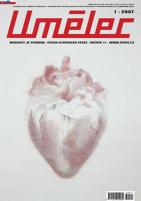














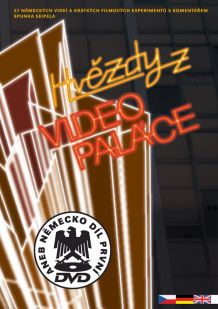




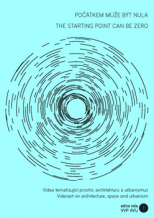
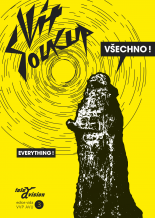
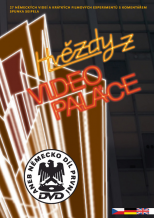
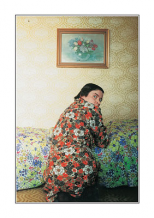


 New book by I.M.Jirous in English at our online bookshop.
New book by I.M.Jirous in English at our online bookshop.
Comentarios
Actualmente no hay comentariosAgregar nuevo comentario